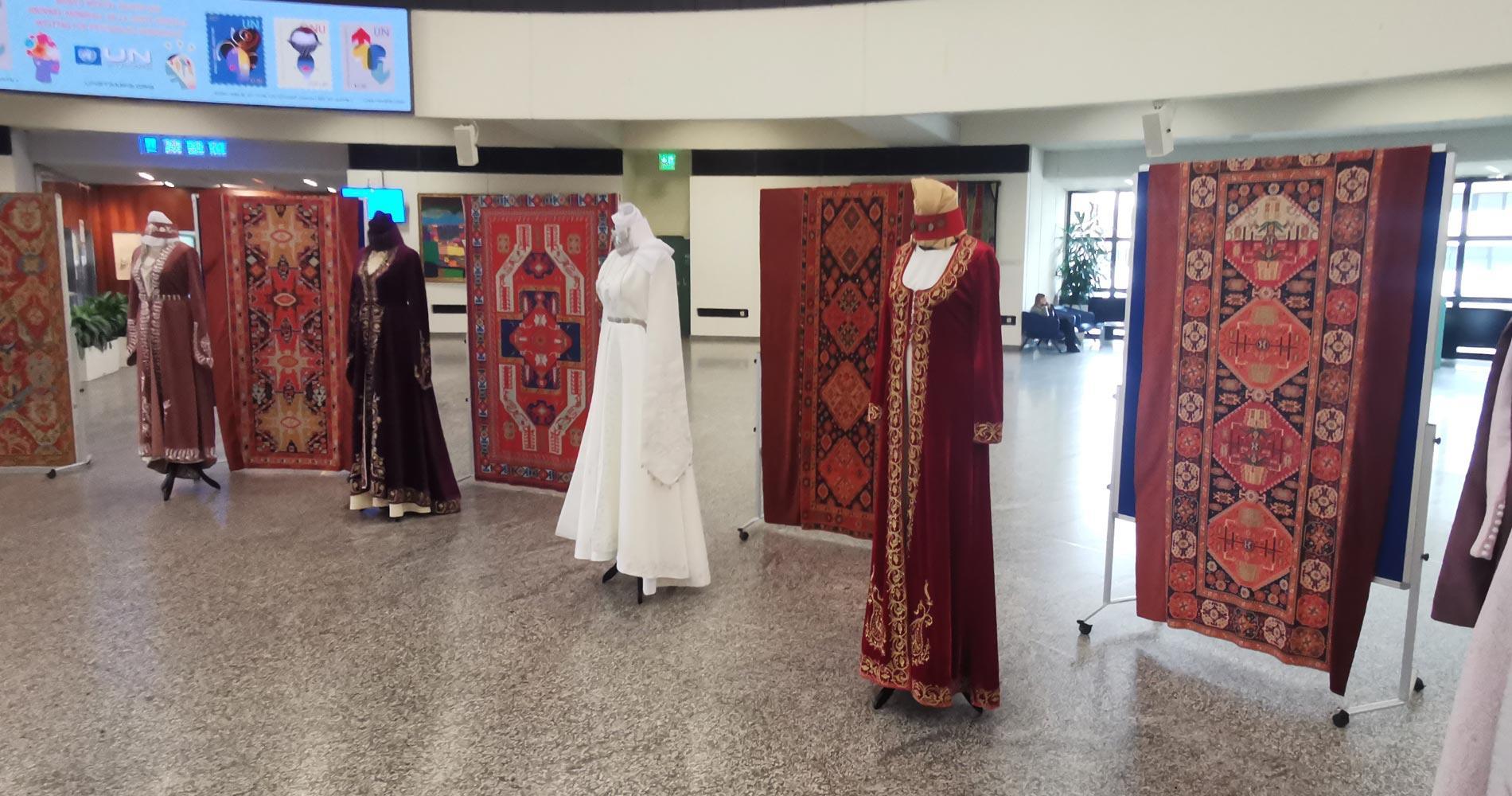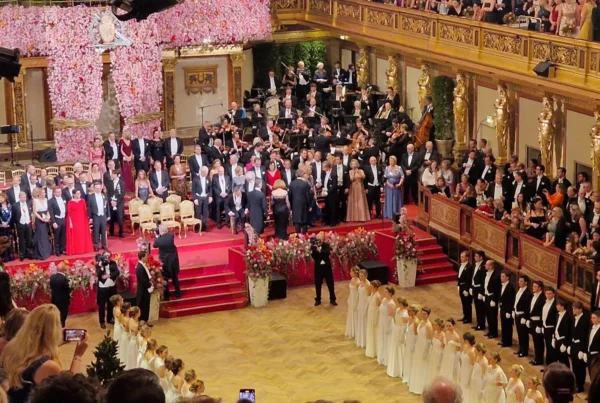The UN in Vienna hosted a delightful exhibition of Armenian traditional costumes, artistry and rugs. The pieces on display were copies of historic costumes and rugs. Visitors of the exhibition were invited to immerse themselves into Armenian culture and history. The exhibition was organized by the Permanent Mission of the Republic of Armenia in Vienna.
Diana Mautner Markhof, 27 October 2023
The Rotunda of the United Nations in Vienna is often used for exhibits, events and fairs. From October 16-20 the Permanent Mission of the Republic of Armenia filled the venue with beautiful rugs and national costumes. The exhibition titled “Future of the Past: Empowering Women Entrepreneurs through Supporting the Revival of Traditional Art of Armenia” was part of a project by Teryan Cultural Center “Future of the Past”. The exhibition was curated by Ms. Lilit Melikyan, who worked closely with ethnographers and consulted numerous historic and literary sources.
According to the official pamphlet, the exhibition aims to support women entrepreneurs and to contribute to education. The aim of the “Future of the Past” project is to revive many ancient traditions of Armenia and inform a wider audience of the rich cultural heritage of Armenia. This is especially important in light of the ongoing displacement of over 100 000 Armenians from their historic homeland in Bergkarabach. The exhibition serves as a gentle reminder not to look away from an unfolding humanitarian catastrophe.
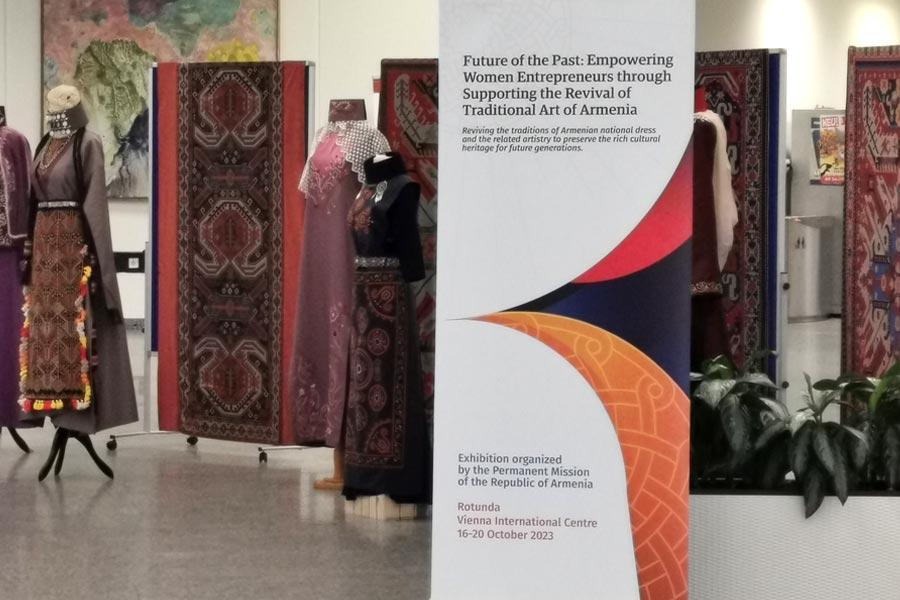
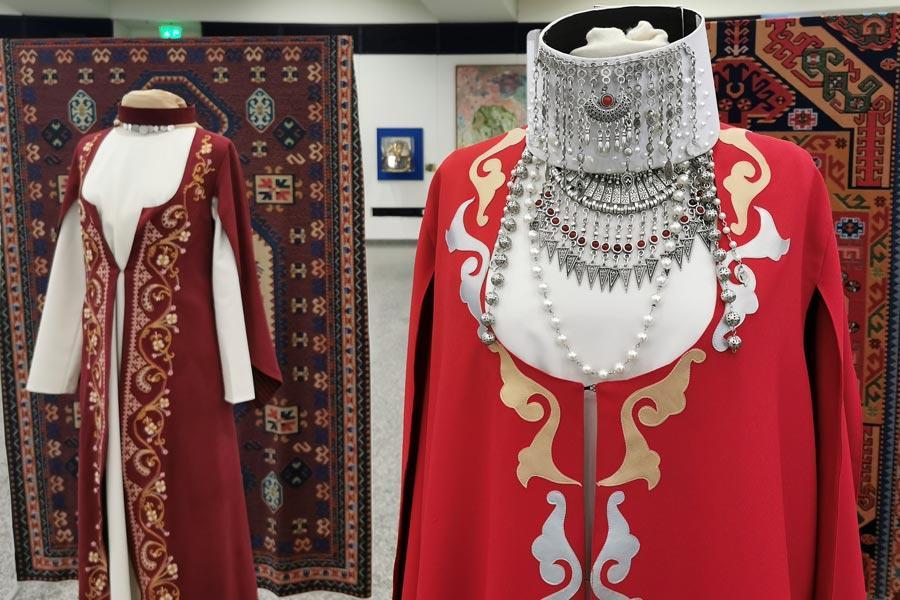
The Armenian taraz, the national costume, has a long history. Throughout the millennia the taraz has evolved and adapted to varying geographic, climatic, and economic environments. It is worn in various regions of Armenia, which has always been at the crossroad of civilizations from North to South, from East to West. The dresses on display have different ornamental motifs and intricately designed embroidery.
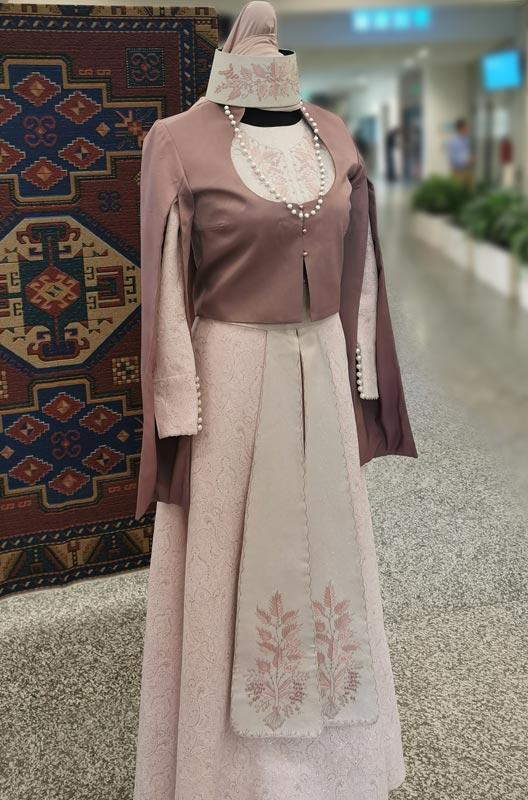
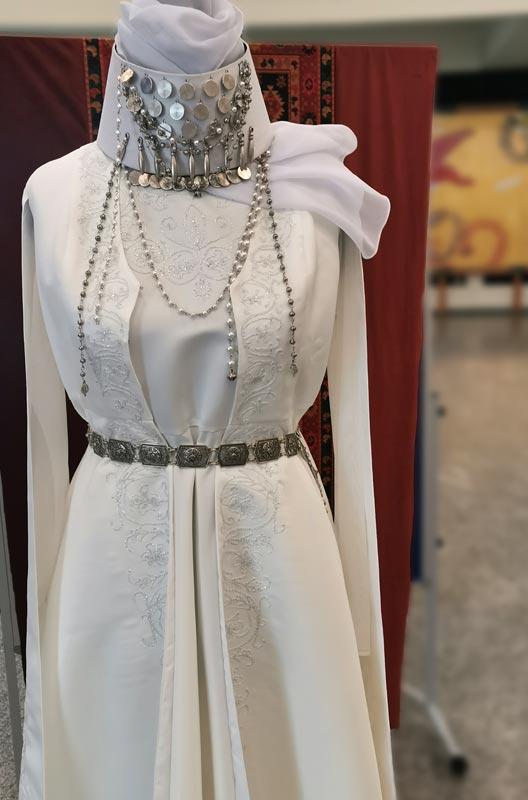
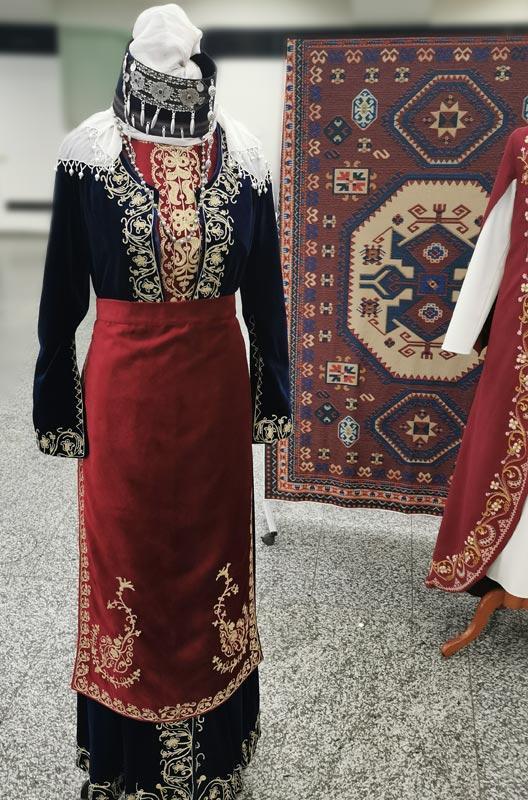
The costumes were made from wool, silk and velvet – depending on which area in Armenia they came from – and reflected the wearers social standing, age and family. Together with the dress itself, a set of matching headdresses, underwear, outwear and footwear completed the ensemble. A very important element of the taraz is the belt, which sometimes is made of doubly folded woolen or cotton fabric and can be up to six meters in length and one meter wide. Some very elaborate costumes displayed belts made of silver with elaborate engravings and ornament decorations. The embroidery on the taraz has itself a long tradition in Armenia.
The Armenian costumes on display were handmade based on original samples from various museums around the globe and mostly reflect the taraz of the 19th and beginning 20th centuries. The exhibition also displays some bridal dresses.
In addition to the dresses, the exhibition showcased a wide range of Armenian rugs. Carpet weaving has a long tradition in Armenia. Some of the traditional carpets of Armenia include the Jraberg rugs, the Khndzoresk Rug, the Lori-Pambak rug, the Star-bird rug and the Vorotan-Sisakan rug (to name a few). Armenian merchants along China’s original Silk Road, which connected China to Europe, traded Armenian rugs for other goods. This brought many Armenian rugs to Europe and Asia. Many European paintings of the 14th century display Armenian rugs as a decorative element. A prominent 15th century Dutch artist Hans Memling is known for his carpet displays in his paintings. These carpets have come to be known as Memling carpets.
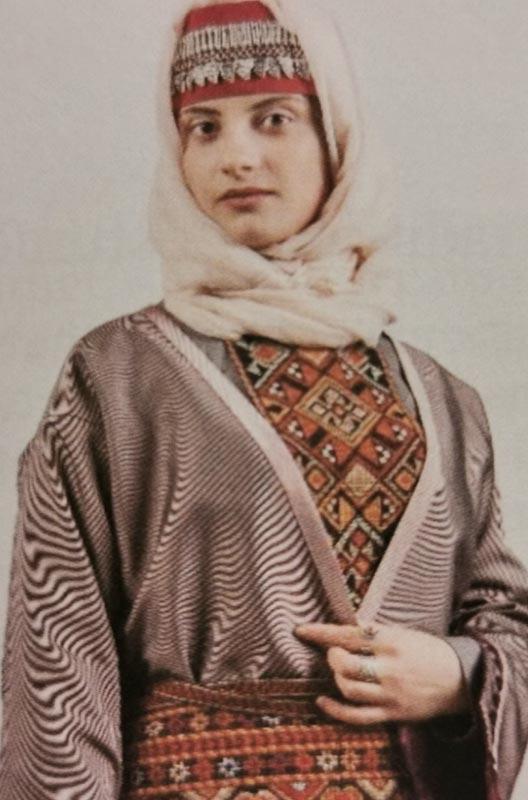
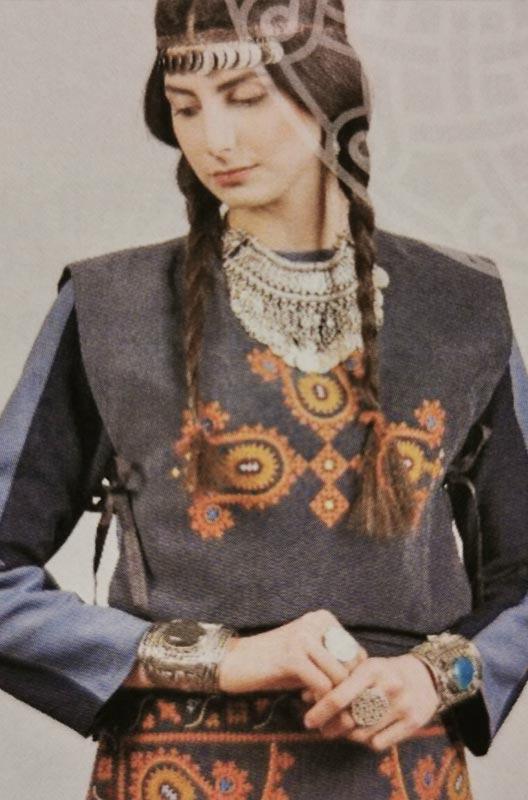
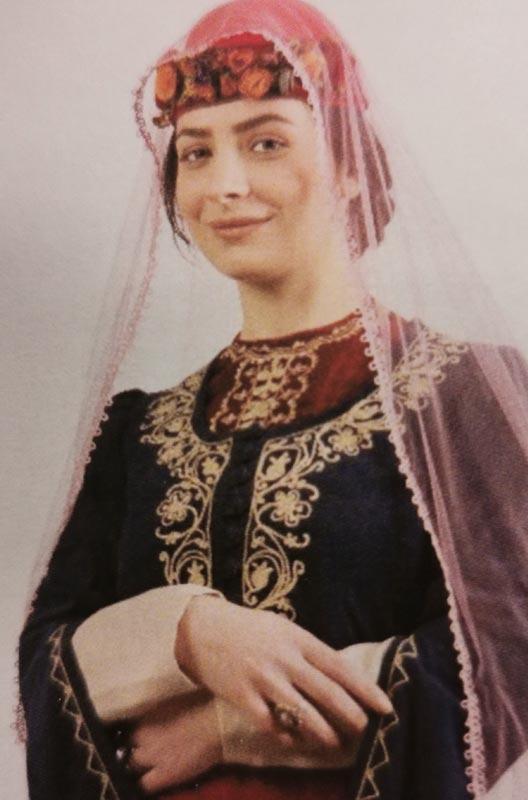
The Jraberg rug, originates from the Syunik province of Armenia and contains original elements and specific ornamental designs, which include spider-like motifs in mainly reds and blues. The Voroton-Sisakan Rug, also from the Syunik region, is recognizable by its arrow-shaped patterns. The worship of water stood at the center of this design. The Khndzoresk rug originated in the Goris community of the Syunik province in Armenia and is known for its dragon shapes. The Lori-Pambak rug comes from the village of the same name in the northern Lori province of Armenia. The design on these rugs is iconic and has been often copied.
Carpet weaving in Armenia was traditionally the work of women. Its history, as with the taraz, goes back many thousands of years. The rugs in the exhibition are replicas of original carpets and rugs from various museum. One highlight of the exhibition is the replica of the 18th century Dragon rug. In ancient times dragons were considered the personification of evil. The depiction of the dragon on the rug was meant to ward off evil forces.
The exhibition at the UN Vienna Rotunda was a delightful introduction into Armenia’s rich traditions and designs and a reminder that the Armenian people are still enduring much hardship in today’s world.


